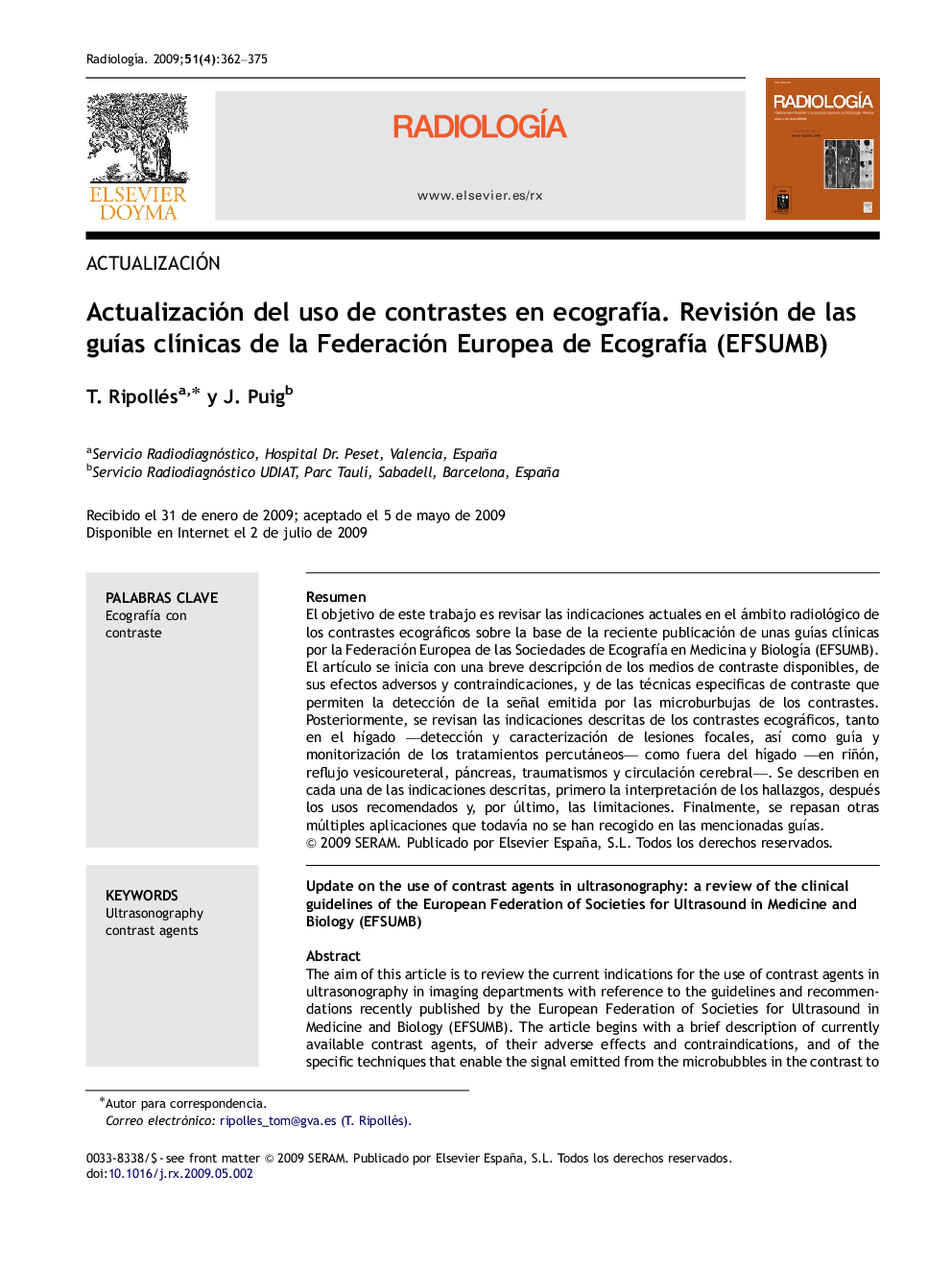| Article ID | Journal | Published Year | Pages | File Type |
|---|---|---|---|---|
| 4246044 | Radiología | 2009 | 14 Pages |
ResumenEl objetivo de este trabajo es revisar las indicaciones actuales en el ámbito radiológico de los contrastes ecográficos sobre la base de la reciente publicación de unas guías clínicas por la Federación Europea de las Sociedades de Ecografía en Medicina y Biología (EFSUMB). El artículo se inicia con una breve descripción de los medios de contraste disponibles, de sus efectos adversos y contraindicaciones, y de las técnicas especificas de contraste que permiten la detección de la señal emitida por las microburbujas de los contrastes. Posteriormente, se revisan las indicaciones descritas de los contrastes ecográficos, tanto en el hígado —detección y caracterización de lesiones focales, así como guía y monitorización de los tratamientos percutáneos— como fuera del hígado —en riñón, reflujo vesicoureteral, páncreas, traumatismos y circulación cerebral—. Se describen en cada una de las indicaciones descritas, primero la interpretación de los hallazgos, después los usos recomendados y, por último, las limitaciones. Finalmente, se repasan otras múltiples aplicaciones que todavía no se han recogido en las mencionadas guías.
The aim of this article is to review the current indications for the use of contrast agents in ultrasonography in imaging departments with reference to the guidelines and recommendations recently published by the European Federation of Societies for Ultrasound in Medicine and Biology (EFSUMB). The article begins with a brief description of currently available contrast agents, of their adverse effects and contraindications, and of the specific techniques that enable the signal emitted from the microbubbles in the contrast to be detected. Next, we review the indications for ultrasound contrast agents both in the liver (detecting and characterizing focal lesions as well as guiding and monitoring percutaneous treatments) and outside the liver (in the kidney, vesicoureteral reflux, pancreas, traumatisms, and cerebral circulation). For each of the indications, first we describe the interpretation of the findings, then the recommended uses, and finally the limitations of the technique. Finally, we review all the other applications that have yet to be included in the EFSUMB guidelines.
